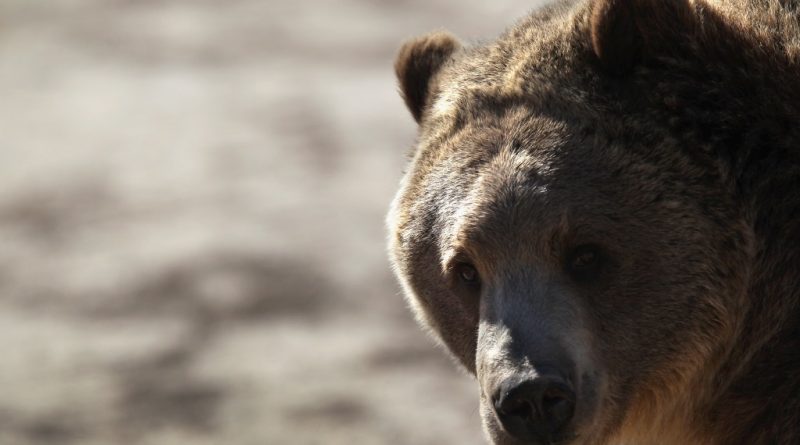Think you know about the outdoors? Let’s bust some myths. – The Denver Post
You’re all set for your next hike, backpacking trip or camping excursion, secure in your knowledge of the great outdoors. Right?
Not so fast. It turns out some of what we think we know about wildlife, surviving in the outdoors, campfires, mushrooms and more might be old-fashioned or just plain wrong.
“Myths about the outdoors can be detrimental to the resources we love and cherish,” said Joseph Livingston, statewide public information officer for Colorado Parks and Wildlife. “A proper understanding of the outdoors is vital to knowing how to protect those resources and keep you safe.”
In fact, there are so many misconceptions that Colorado author Jamie Siebrase wrote a book, “Mythbusting the Great Outdoors: What’s True and What’s Not,” published this month by Falcon Guides.
“While I tried to write about topics that would be interesting to anyone in the country, I ended up including lots of information that’s relevant to Colorado wilderness exploration, and many of my sources are from Colorado,” Siebrase said. “I couldn’t believe how many outdoor myths are out there!”
The book is divided into 13 topics: avalanches; the North Star (celestial navigation); cold weather and human health; fungus; wolves; earthquakes; campfires; moss (also includes navigation); pooping; lightning; cold-weather survival; sharks; and bears.
Let’s see what you do and don’t know:
1. If you see a baby animal alone in the wilderness, should you rescue it? Myth: A baby animal is suffering when alone and in need of human help.
“If you see a baby animal all alone, do not touch it and call your local wildlife office for directions,” Livingston said. “It can seem counterintuitive to humans, but many wild animals leave their young alone for long periods of time.”
In fact, he explained, a baby deer is too slow so its mother might leave it alone in a safe place for most of the day while she gets food. A fawn does not have a scent, so it is unlikely to be detected by predators. But once a human touches it, a scent is left and makes the young animal a target and harder for the mother to find her young when she returns.
2. Should you eat raw mushrooms? Myth: Mushrooms have health benefits and are safe to pick and eat in the wild.
“Many mushroom myths have to do with safe preparation, and I bust a lot of those myths in the book,” Siebrase said. “One thing I learned that I now practice regularly: Never eat raw mushrooms, with the exception of truffles since they are used in tiny amounts like a spice.”
Some mushrooms contain a carcinogen that evaporates under heat, and others might be contaminated with heat-sensitive bacteria.
3. Is it true that you should play dead with grizzly bears and fight back with black bears?
“Spoiler alert: The best practice is to observe the individual bear’s behavior and base your reaction on that,” Siebrase said. “This is explained in detail over several pages in the book.”
For the avid trail-runner, the information about black bears was personal. “Since we’ve got black bears here in Colorado, and I spend a lot of time hiking and running on local trails, I was really interested in learning about bear safety,” Siebrase said. “Originally I set out to bust the myth that hikers can’t wake hibernating bears, but they definitely can.”
4. Can dogs just run off leash if they are well-behaved? Myth: Some dogs cause no harm to themselves, wildlife or natural resources when out having fun on a hike.
“Letting your dog run off leash puts other animals, your dog and you at risk,” Livingston said. “Deer, elk and moose cannot differentiate between their natural predators like coyotes and your dog. They can become very aggressive, especially when they have fawns, and have killed many curious pets.”
Small dogs might be prey for hawks, owls and coyotes, and dogs of any size have been known to bring a pursuing large animal — such as a moose or bear — back to their owners. There are also risks to canines from rattlesnakes, porcupines, skunks and raccoons.
“When recreating in wildlife habitats, please keep your dog on a 6-foot leash for your dog’s safety as well as yours,” he said.
5. Do you need a gun for protection from lions and bears? Myth: Firearms will save you from harm by a predator.
“Bear spray has proven to be significantly more effective at deterring bears and mountain lions than firearms,” Livingston said. “First, attacks on humans are very rare, so the chances of needing to use any deterrents is small, especially if you are being bear aware and removing scent attractants from your camp. Second, if you shoot a bear or mountain lion, it can still see you and smell you. It now feels attacked and knows right where you are. If you spray them with bear spray, you take away their sight and sense of smell so they cannot see or smell where you are, giving you time to get away safely.”
6. Is carrying out your own waste always necessary? According to Siebrase, “It is a misconception that Leave No Trace wants people to pack out their own poop by collecting it in a plastic bag.”
While in some wilderness areas, using a “wag bag” (a specialized bag for human waste that includes chemicals to reduce odor) might be a requirement, Siebrase found in talking to experts that digging a sufficient “cat hole” (a small hole about 6 to 8 inches deep and at least 200 feet away from any water source) is acceptable. The big no-no is to leave the waste on the surface. Waste in the hole — including toilet paper — will biodegrade without attracting wildlife or leaving a gross mess for others to find.
Yet another myth busted: Hand sanitizer isn’t a reliable substitute for soap and water, Siebrase found. Her book recommends carrying a small amount of biodegradable soap for washing up.
For more tips, Livingston recommends the Colorado Parks and Wildlife website or one of its clinics that teach people about how to recreate responsibly.
“Learning about wildlife and the outdoors is not only fun, but also gives you the knowledge and tools to serve as a steward of Colorado’s beautiful and vital natural resources,” Livingston said.
Subscribe to our weekly newsletter, The Adventurist, to get outdoors news sent straight to your inbox.
Source: Read Full Article





